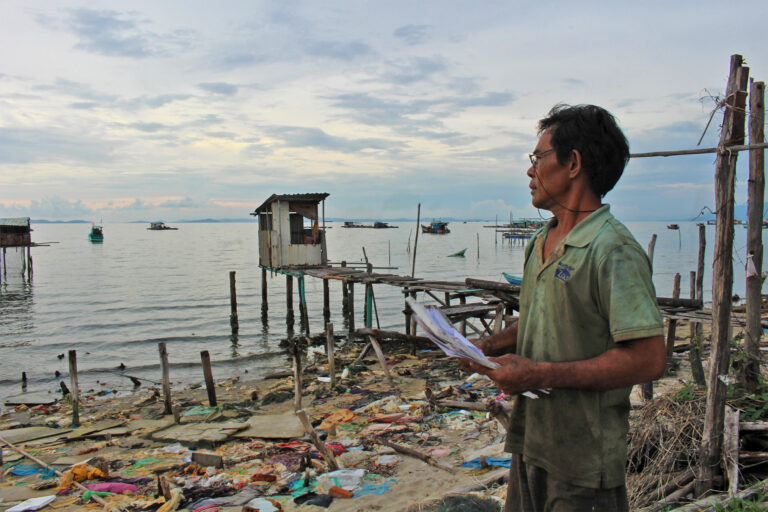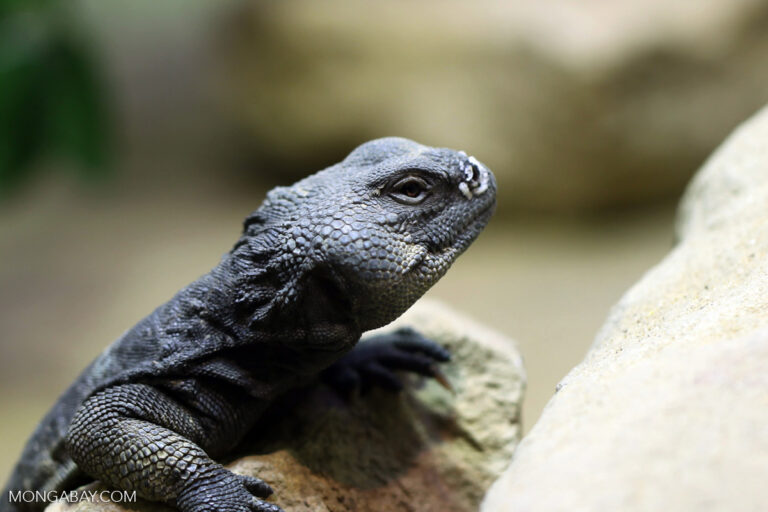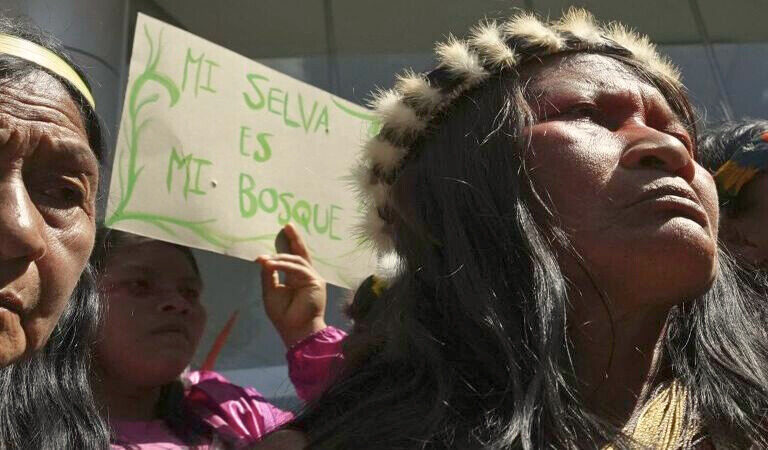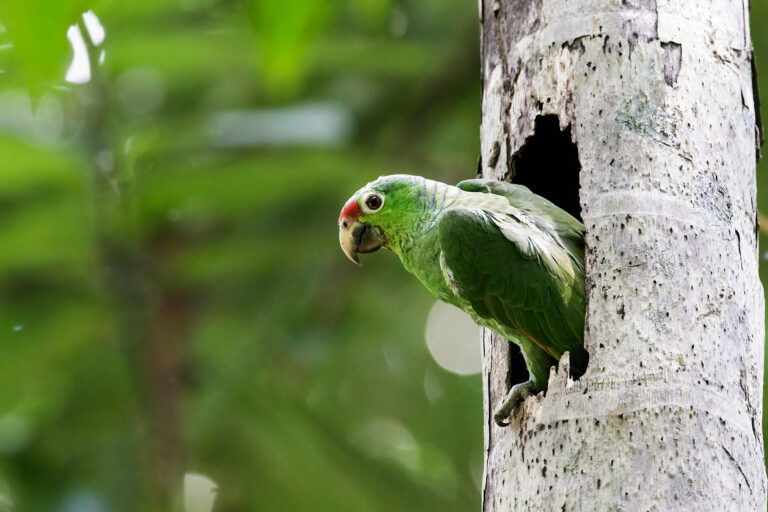- A new report warns that the expansion of oil, gas and liquefied natural gas projects in the Coral Triangle region in the Western Pacific risks unleashing more oil spills, direct damage to coral reefs, noise pollution and ship traffic, not to mention greenhouse gas emissions.
- More than 100 offshore oil and gas blocks are currently in production, and more than 450 additional blocks are earmarked for future exploration, according to the report. If these projects are approved, the production and exploration blocks would cover 16% of the Coral Triangle, an area the size of Indonesia, the report states.
- The report notes there is already overlap between oil and gas operations and critical conservation zones, including 16% of the Coral Triangle’s marine protected areas.
- The Coral Triangle is one of Earth’s most biodiverse regions, stretching across the waters of the Philippines, Indonesia, Malaysia, Papua New Guinea, Timor-Leste and the Solomon Islands. It’s home to 76% of all known coral species, as well as numerous endangered marine species.
Fossil fuel projects are putting the Pacific Coral Triangle’s unique marine ecosystem at risk, according to a new report presented Oct. 31 at the U.N. Convention on Biological Diversity summit (COP 16) in Cali, Colombia.
The report warns that the expansion of oil, gas and liquefied natural gas (LNG) projects in the region risks unleashing more oil spills, direct damage to coral reefs, noise pollution and ship traffic, not to mention greenhouse gas emissions. The additional stressors, combined with existing challenges of a warming sea, could push the Coral Triangle’s fragile marine ecosystem past its tipping point, according to the report.
The Coral Triangle is one of Earth’s most biodiverse regions, stretching across the waters of the Philippines, Indonesia, Malaysia, Papua New Guinea, Timor-Leste and the Solomon Islands. It’s home to endangered marine species like green turtles (Chelonia mydas) and oceanic manta rays (Mobula birostris), as well as 76% of all known coral species. Fifteen coral species are endemic to the region, which means they aren’t found anywhere else.
The Coral Triangle nations’ need for more energy is certain. Energy consumption is predicted to triple by 2050 as a result of “population growth and development needs,” according to the report. Despite significant investments in renewables, fossil fuel projects are growing quickly. The report states that more than 100 offshore oil and gas blocks are currently in production, and more than 450 additional blocks are earmarked for future exploration. If these projects are approved, the production and exploration blocks would cover 16% of the Coral Triangle, an area the size of Indonesia, the report states.
The report, prepared by U.S.-based conservation mapping nonprofits Earth Insight and SkyTruth, notes there is already overlap between oil and gas operations and critical conservation zones. These include 11% of the Coral Triangle’s key biodiversity areas, 16% of its marine protected areas, and 11% of its important marine mammal areas. Within these zones, 24% of coral reefs, 22% of seagrass meadows and 37% of mangrove forests overlap with current or planned oil and gas blocks.
“Expanding fossil fuel in the Coral Triangle is a dangerous course of action,” Florencia Librizzi, Earth Insight’s program director, said in a statement. “Not only does it threaten one of the world’s most biodiverse marine ecosystems, it also jeopardizes the future of millions of people who rely on a clean ocean.”

Coral reefs at severe risk
The report’s findings were “extremely alarming,” said Affendi Yang Amri, a coral reef ecologist with the Institute of Ocean and Earth Sciences at the University of Malaya, Malaysia.
“The vast coral networks that make up the Coral Triangle are well-known for their ability to sustain biodiversity through species migration and gene transfer,” Affendi, who was not involved in the report, told Mongabay by email. But, he said, when oil and gas industries are set up in the area, they can break up large coral reefs into smaller, isolated patches. This weakens the overall ecosystem and the genetic diversity of the reef.
Affendi stressed that energy development plans in the Coral Triangle must have marine conservation strategies.
“We must adapt to co-exist with industrial activities that may be unavoidable in certain areas,” he said. “This could mean implementing ‘buffer zones’ around critical habitats, more rigorous impact assessments, and requiring industries to use low-impact construction and operational techniques.”
According to Affendi, oil and gas facilities affect coral ecosystems through dredging, reclamation, and pipeline construction, which raise sedimentation and discharge chemical pollutants, making it harder for them to grow.
Reduced water quality and light penetration make it harder for corals to photosynthesize, which makes them more vulnerable to bleaching. When stressed, corals expel the algae that live in them, turning white as a result; long-term bleaching starves and kills corals. Globally, corals are currently undergoing the largest mass bleaching event on record.
“Corals are extremely sensitive to changes in their physical surroundings,” Affendi said. “Even little physical disturbances can have a significant impact on biodiversity in coral ecosystems.”
Affendi expressed concern over how regulations will be enforced. “Even with stricter LNG regulations, coral ecosystems would still face damage, though improved oversight can certainly mitigate some of the risks,” he said, suggesting that oil and gas companies be mandated to pay deposits to be used for cleanup efforts in the event of an incident.

Crying over spilled oil
More than 120 million people in the Coral Triangle depend on small-scale agriculture, fishing and tourism for income. But busier shipping routes bring an increased risk of oil spills.
Since 2020, SkyTruth has detected 793 oil slicks around the Coral Triangle, mostly caused by vessel bilge dumping — when ships flush out the mix of water, oil and other fluids that have collected in the bottom of the ship.
More severe accidents happen, too. In February 2023, the Princess Empress ship carrying 800,000 liters (211,000 gallons) of industrial fuel sank off the Philippine coast. The spill affected 20 marine protected areas and the livelihoods of fishers and farmers in 20 municipalities. It took the Philippine Coast Guard four months to contain the spill, with damage to fisheries alone reaching 3.8 billion pesos ($68.3 million at the exchange rate at the time).


Climate impacts
For the nations in the Coral Triangle, coal still dominates the energy mix. LNG has been pushed as a “cleaner” option to slash carbon emissions, but evidence suggests it may not be as clean as it seems, and the report notes that if planned LNG development goes ahead, “the Coral Triangle would end up locked in a fossil fuel economy that is incompatible with the Paris Agreement, jeopardizing the global fight against climate change.”
LNG’s main component is methane, a potent greenhouse gas that can warm the Earth 80 times more than carbon dioxide over a 20-year period. Methane can enter the atmosphere from LNG-fueled ships that leak unburned fuel from the engines, a phenomenon known as methane slip, or from tankers that emit plumes while loading or unloading cargo in port, the report states.
A 2022 study published in Environmental Science & Technology indicated that methane slips from LNG tankers were higher than previous estimates, contributing to concerns that these emissions might cancel out any climate benefits LNG could offer over coal.
Report recommendation: Ditch fossil fuels for renewables
To avoid potential disasters, the report suggests a moratorium on fossil fuel development in ecologically sensitive areas within the Coral Triangle. It also suggests designating the region as a Particularly Sensitive Sea Area (PSSA), which would grant it special protection against shipping activities.
“Fossil fuel expansion is destroying vibrant marine life and livelihoods in the Coral Triangle,” Gerry Arances, executive director of the Center for Energy, Ecology, and Development (CEED), a Philippines-based think tank that contributed to the report, said in a statement.
“Communities across the Coral Triangle will not allow this to happen, especially when we have an abundant potential of renewables that we can instead tap for energy needs without destroying our coasts and seas,” Arances added.
Banner image: Sea fan corals and reef fish in Raja Ampat, Indonesia. Image by Tracey Jennings / Ocean Image Bank.
UN falls short on coral funding as reefs face largest bleaching event on record
Citations:
Balcombe, P., Heggo, D. A., & Harrison, M. (2022). Total methane and CO2 emissions from liquefied natural gas carrier ships: The first primary measurements. Environmental Science & Technology, 56(13), 9632-9640. doi:10.1021/acs.est.2c01383
Howarth, R. W. (2024). The greenhouse gas footprint of liquefied natural gas (LNG) exported from the United States. Energy Science & Engineering. doi:10.1002/ese3.1934
FEEDBACK: Use this form to send a message to the editor of this post. If you want to post a public comment, you can do that at the bottom of the page.













